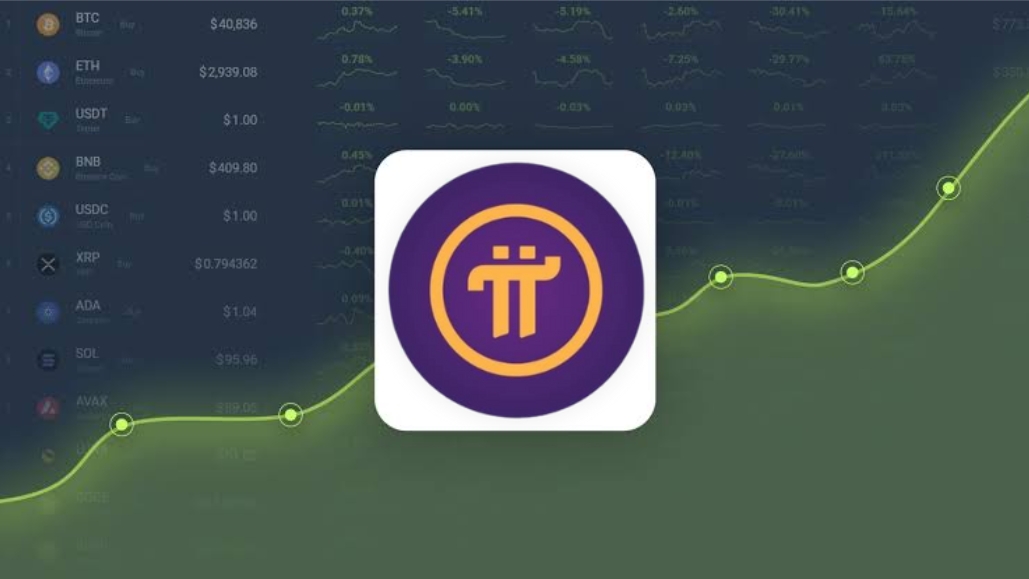As the countdown to the highly anticipated mainnet launch on June 28, 2024, approaches, Pi Network enthusiasts find themselves on the cusp of a momentous milestone in the platform’s evolution. The air is charged with anticipation and excitement, as users eagerly await the transition that promises to redefine the landscape of decentralized finance. However, amidst the fervor and optimism surrounding the impending mainnet launch, a sobering truth emerges—a truth that threatens to dampen the spirits of those who have dedicated time and effort to mining Pi.
For many users, the journey of mining Pi has been marked by dedication, perseverance, and the hope of building a substantial Pi portfolio. Yet, as the moment of migration to mainnet draws near, a bitter reality begins to surface. Despite their aspirations of accumulating a significant sum of Pi, users are confronted with the harsh realization that their expectations may not align with the actual outcome. Instead of receiving the full amount of Pi they’ve diligently mined, they discover that only a fraction of their efforts will be reflected in their wallets post-migration.
The Harsh Reality: Receiving Half of Mined Pi
The statement highlights a harsh reality faced by users of the Pi Network who have been eagerly mining Pi in hopes of accumulating substantial holdings. It underscores the fact that the amount of Pi displayed in users’ mining accounts does not necessarily represent the full amount they will receive. This discrepancy between the displayed balance and the actual amount received upon migration to mainnet can be disappointing for users who had high hopes of accumulating significant Pi holdings.
The revelation prompts users to question the accuracy of the balances displayed in their mining accounts. They may wonder why they are not receiving the full amount of Pi they expected based on their mining efforts. This discrepancy raises concerns about transparency and trust within the Pi Network ecosystem.
Furthermore, users may also question whether they will ever receive the remaining balance of Pi that they mined but did not receive during migration. This uncertainty adds to the disappointment and frustration felt by users who had invested time and resources into mining Pi in the hopes of building a substantial Pi portfolio.
Understanding the Migration Process
To grasp why users receive only a portion of their mined Pi, it’s crucial to understand the migration process. The Pi Network core team emphasizes that the allocation of Pi is not within their control; instead, it’s up to individual users to secure their share before it’s too late. Upon mainnet launch, unclaimed Pi will become available for others to mine, leading to deductions from users’ accounts.
Securing Your Pi: Taking Action Before Mainnet Launch
As users prepare for the transition to mainnet, it’s essential to take proactive steps to secure their Pi holdings. This involves understanding the Pi Network dashboard and the significance of various balance categories. The unverified balance represents Pi awaiting verification, while the transferable balance can be claimed in the next migration phase.
Claiming Your Pi: A Step-by-Step Guide
Here are the steps to claim Pi before mainnet launch through the Know Your Customer (KYC) verification process:
1. Initiate the KYC Process:
Before mainnet launch, it’s essential to begin the KYC process to ensure your Pi holdings are secured. This involves accessing the designated KYC verification section within the Pi Network platform.
2. Guide Team Members:
Encourage team members to initiate the KYC process as well. Emphasize the importance of completing KYC verification to protect their Pi holdings and ensure compliance with regulatory requirements.
3. Provide Necessary Documentation:
Users will need to provide personal identification documents as part of the KYC verification process. These documents typically include government-issued ID cards, passports, or driver’s licenses.
4. Complete Verification Procedures:
Once the necessary documentation is provided, users must complete the verification procedures outlined by the Pi Network platform. This may involve submitting photos of identification documents and verifying personal information.
5. Offer Support:
Support team members throughout the KYC verification process by providing guidance and assistance as needed. Address any questions or concerns they may have and offer troubleshooting support for any issues that arise.
6. Monitor Progress:
Regularly check the dashboard for updates on the status of KYC verification. Monitor the progress of team members’ verification procedures and ensure that all necessary steps are completed in a timely manner.
7. Address Any Issues Promptly:
If any issues or discrepancies arise during the KYC verification process, address them promptly to prevent delays or complications. Provide assistance to team members in resolving any issues and ensure that verification procedures are completed accurately.
By following these steps and actively engaging with team members throughout the KYC verification process, users can ensure their Pi holdings are secured before mainnet launch. Encouraging collaboration and providing support within the community fosters trust and cooperation, strengthening the integrity of the Pi Network ecosystem.
Looking Ahead: The Next Migration Phase
As the Pi Network community navigates the migration process and anticipates the upcoming mainnet launch on June 28, 2024, excitement and anticipation are palpable. With each step towards migration, users are presented with opportunities to secure their Pi holdings and solidify their position within the evolving Pi Network ecosystem.
1. Staying Informed:
Remaining informed about the latest updates and developments regarding Pi migration is paramount. Users should actively engage with official communications from the Pi Network core team, including announcements, newsletters, and platform notifications. By staying informed, users can stay ahead of changes and updates, ensuring they are well-prepared for each phase of the migration process.
2. Participating Actively:
Active participation in the migration process is key to maximizing Pi holdings and securing one’s place within the Pi Network ecosystem. This involves taking proactive steps, such as completing KYC verification, monitoring the dashboard for updates, and addressing any outstanding tasks promptly. By actively participating, users can ensure they are taking full advantage of opportunities to claim and secure their Pi holdings before mainnet launch.
3. Maximizing Pi Holdings:
Each phase of the migration process presents users with opportunities to maximize their Pi holdings. By actively participating and following the necessary steps outlined by the Pi Network core team, users can ensure they are securing their rightful share of Pi before mainnet launch. This may involve completing KYC verification, claiming unverified balances, and transferring Pi to their wallets in preparation for mainnet launch.
4. Securing a Place in the Ecosystem:
By actively participating in the migration process and maximizing their Pi holdings, users can secure their place within the evolving Pi Network ecosystem. As the network transitions to mainnet, those who have actively participated in the migration process will be well-positioned to benefit from the opportunities and advancements that lie ahead. Whether it’s participating in network governance, staking Pi for rewards, or engaging in decentralized applications, active participants will play a vital role in shaping the future of the Pi Network.
Conclusion: Embracing the Truth and Taking Action
While the reality of receiving only a fraction of mined Pi may be disappointing, understanding the migration process is essential for securing Pi holdings before mainnet launch. By taking proactive steps, such as initiating KYC verification and monitoring the dashboard regularly, users can ensure they receive their rightful share of Pi. As the Pi Network community prepares for the next phase of migration, embracing the truth and taking decisive action is key to maximizing Pi holdings and participating fully in the future of decentralized finance. Read Something Similar

















I am sending you 1π! Pi is a new digital currency developed by Stanford PhDs, with over 55 million members worldwide. To claim your Pi, follow this link https://minepi.com/daiv101 and use my username (daiv101) as your invitation code.
I am sending you 1π! Pi is a new digital currency developed by Stanford PhDs, with over 55 million members worldwide. To claim your Pi, follow this link https://minepi.com/dreamtreats and use my username (dreamtreats) as your invitation code.
Satoshi – Global Free Airdrop
Satoshi is the world’s top one free airdrop platform,we will have various outstanding projects and tens of million crypto world residents.
https://www.btcs.love/invite/6yygn
#Athene #Network #ATH #Pi #PiNetwok #OpenEx #OEX
Good news Athene Network launched offical P2P trading Wesbite
Now you buy Sell … Ath Gem Pi on this Trading Site
Register your account link 👇
https://play.google.com/store/apps/details?id=network.athene.app
Refferal code.
b1c56e701883
#OpenEx #Wallet #OEX #Satoshi
OpenEx OEX Wallet
https://oex.to/d/1YtksPn
Both Network, A Unique And New Player Set To Revolutionize Digital Commerce With Seamless Integration On World’s Leading Marketplaces.
BOTH Network handles the conversion and withdrawal process directly. Join BOTH Network Facebook page here 👉 https://www.facebook.com/profile.php?id=61558775162823&mibextid=ZbWKwL